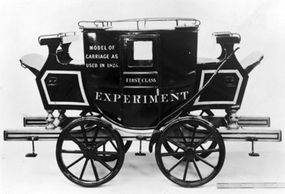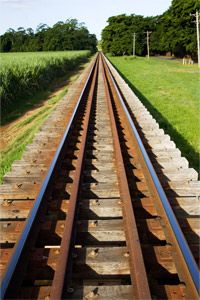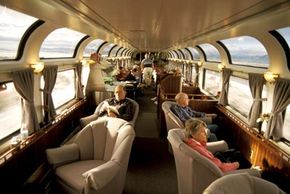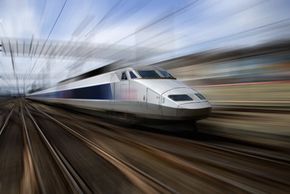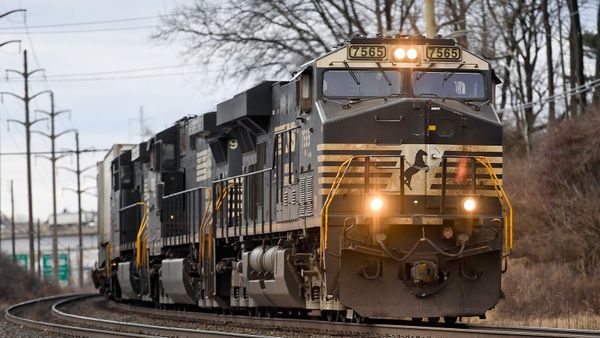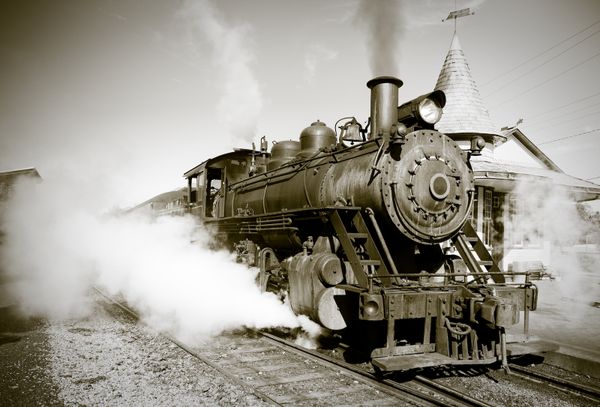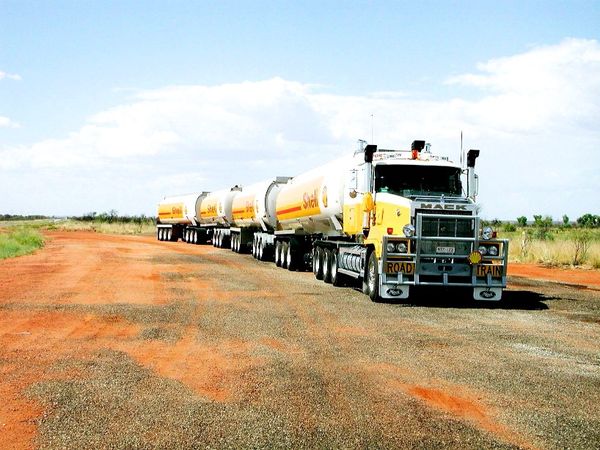When we say train, we don't just mean a Thomas the Tank Engine. Rather we're referring to the whole package: railroad cars, railroad track, switches, signals and a locomotive, although not all trains rely on locomotives to pull them, but most of the trains we'll mention do.
With the locomotives leading the way, coupled-together railroad cars follow, filled with freight and passengers — even circus animals in some instances. The railroad track steers the train and does a few other things that we'll talk about later. Because many trains operate on the same track, switches and signals control the traffic. Let's break it down.
The job of the locomotive is to change the chemical energy from the fuel (wood, coal, diesel fuel) into the kinetic energy of motion. The first locomotives did this with a steam engine, which you can read more about in How Steam Technology Works. The steam locomotive lasted for about a century, but was eventually replaced by the diesel locomotive, a mighty mechanical wonder that may consist of a giant engine along with electric alternators or generators to provide electrical power to the train. In fact, diesel locomotives have their very own article — How Diesel Locomotives Work. Many trains intersperse multiple locomotives throughout their lineup to increase and distribute the power.
Besides steam- and diesel-powered locomotives, many modern trains operate solely on electrical power. They get the electricity from a third rail, or electrical line, along the track. Transformers transfer the voltage from the lines, and the electrical current drives the motors (AC or DC) on the wheels. Electrical locomotives are used on subways and many commuter rail systems.
Operators control the train by using the throttle, reversing gear and brake. The throttle controls the speed of the locomotive. The reversing gear enables the locomotive to back up. The brake allows the locomotive to slow and stop. Regardless of the type, locomotives use air brakes and hand brakes to stop the engine.
Air brakes use high-pressure air to drive the brake foot against the wheel. The friction between the brake pad and the wheels slows the wheels' motions. The operator also throttles the engine back to slow the train, like when you take your foot off the gas pedal when stopping your car. A mechanical hand brake is also used in case the air brakes fail (usually when there's insufficient air pressure to drive them).
All railroad cars have an undercarriage that contains wheels and a suspension system to buffer the ride. On each end of the undercarriage, couplers, which are like hooks, connect the cars.
What's on top of the undercarriage depends upon the type of railroad car, and there are several.
- A boxcar is a basic box into which crates of goods can be piled up.
- An ore car has an open top and carries coal or other mineral ore such as bauxite.
- A tank car holds liquids, usually chemicals such as chlorine and ammonia.
- Flat cars can hold bulky irregular items on them, such as construction equipment or spools.
- Trailer cars can transport automobiles.
- Container cars are filled with boxed containers of various materials. Often, containers can be double-stacked on these cars.
- Passenger cars, of course, hold people. Some have glass-enclosed viewing areas on top, and some may even be sleeper cars for long trips.
Keep reading to learn about what guides trains on their travels.

